The History of BMC Flooring
Our humble beginnings, our reason for being in business, Big Mama's Carpet and our company name explained...
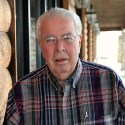 After serving nearly 30 years as a sales executive for the largest carpet mills in the United States, Bill Briggs Sr. had the desire to start his own business. In 1987 the carpet industry had plenty of capacity to manufacture carpet; instead of purchasing equipment to add to the over-capacity in manufacturing in the industry, Mr. Briggs elected to utilize the equipment of commission tufters, dyers, and backers in order to manufacture a product line to sell.
After serving nearly 30 years as a sales executive for the largest carpet mills in the United States, Bill Briggs Sr. had the desire to start his own business. In 1987 the carpet industry had plenty of capacity to manufacture carpet; instead of purchasing equipment to add to the over-capacity in manufacturing in the industry, Mr. Briggs elected to utilize the equipment of commission tufters, dyers, and backers in order to manufacture a product line to sell.
With his vast experience in selling distributors throughout the United States, Bill put together a small line of solution-dyed commercial products with a small commercial tufting operation that did a fine job of making product, but had no way of marketing and selling their product. Each company remained separate companies but worked closely together to grow both businesses.
Briggs Sr. traveled the country and on his first trip opened 6 of his old distributor associates. This plan proved to be perfect for the time -- the major mills were not concentrating on this segment of the market, and, with his low-overhead, Briggs actually offered products to these distributors at a lower price than the big mills.
 Business grew very quickly and by late 1987 Bill Briggs Jr. joined the company after leaving Queen Carpet -- at that time one the fastest growing mills with a focus on selling direct to carpet dealers throughout the country. Briggs Jr. came up through the service end of the business, served as a salesman for a few years, and was then promoted back to the mill to head Customer Service & the Promotional Goods Dept. before leaving to join his father at BMC.
Business grew very quickly and by late 1987 Bill Briggs Jr. joined the company after leaving Queen Carpet -- at that time one the fastest growing mills with a focus on selling direct to carpet dealers throughout the country. Briggs Jr. came up through the service end of the business, served as a salesman for a few years, and was then promoted back to the mill to head Customer Service & the Promotional Goods Dept. before leaving to join his father at BMC.
Business continued to grow and in 1988 BMC added a few independent sales agents to represent the company's growing product offerings in areas of the country without distributor representation. By the end of 1988, BMC had 12 agents and 18 distributors across the country selling its products. The company concentrated on keeping the product line short and sweet, competitively priced, and backed by service unmatched by any of the major mills.
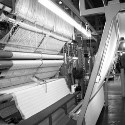 In the 90's the industry started to change as more and more of the major mills were bypassing the distributor and selling direct. The industry also started to consolidate as the bigger mills -- then looking to expand their business and reduce competition -- felt the easiest way to do so was to buy up the smaller mills. The major mills got very aggressive selling the type products BMC had been selling to its distributors. This forced a change in the selling philosophy as BMC added 15 more independent sale agents to expand its direct dealer base. As this trend continued through the 90's, the commission tufters, dyers, and backers also started to consolidate to be able to serve the major mills, as well as the remaining smaller mills like BMC.
In the 90's the industry started to change as more and more of the major mills were bypassing the distributor and selling direct. The industry also started to consolidate as the bigger mills -- then looking to expand their business and reduce competition -- felt the easiest way to do so was to buy up the smaller mills. The major mills got very aggressive selling the type products BMC had been selling to its distributors. This forced a change in the selling philosophy as BMC added 15 more independent sale agents to expand its direct dealer base. As this trend continued through the 90's, the commission tufters, dyers, and backers also started to consolidate to be able to serve the major mills, as well as the remaining smaller mills like BMC.
It was during this period of consolidation that BMC found itself able to offer residential styles to its now mostly direct dealer base. As the commission houses consolidated, they also increased their selection of yarns, machine gauges, dye methods, etc. -- giving BMC the ability to offer products or knockoffs to some of the big mills more popular styles. By keeping overhead low, BMC found itself competing with the larger mills.
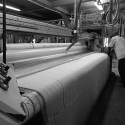 The only area in which BMC could not compete with the larger mills was in sample budgets. To expand their direct dealer base, the major mills would give samples away to get their products placed in dealers stores. It was during this time that BMC introduced its now famous Private Labeled Sample Programs for dealers. These programs offered the dealers the opportunity to have samples manufactured with their brand displayed -- instead of the mill names. This gave the dealers an advantage by reducing consumer price shopping, as well as offering outstanding marketing abilities for the dealer. With these distinct differences from the major mills, dealers were willing to pay a reasonable fee for their Private Samples.
The only area in which BMC could not compete with the larger mills was in sample budgets. To expand their direct dealer base, the major mills would give samples away to get their products placed in dealers stores. It was during this time that BMC introduced its now famous Private Labeled Sample Programs for dealers. These programs offered the dealers the opportunity to have samples manufactured with their brand displayed -- instead of the mill names. This gave the dealers an advantage by reducing consumer price shopping, as well as offering outstanding marketing abilities for the dealer. With these distinct differences from the major mills, dealers were willing to pay a reasonable fee for their Private Samples.
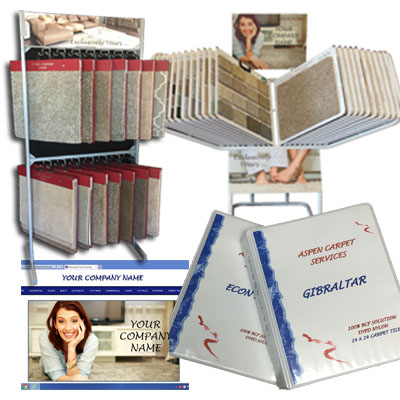 With the success of these Private Labeled Sample Programs the decision was made to expand our product offerings, grow the sales force and attend our first Surfaces -- the major trade show for the carpet industry in 1997. This was a major step forward for BMC as the company's programs and presence in the market place was greatly expanded. As business continued to grow, BMC started receiving offers to purchase yarn from the major mills as they had expanded their manufacturing capacities and were looking for outlets to sell yarn.
With the success of these Private Labeled Sample Programs the decision was made to expand our product offerings, grow the sales force and attend our first Surfaces -- the major trade show for the carpet industry in 1997. This was a major step forward for BMC as the company's programs and presence in the market place was greatly expanded. As business continued to grow, BMC started receiving offers to purchase yarn from the major mills as they had expanded their manufacturing capacities and were looking for outlets to sell yarn.
It did not take long for BMC's commission tufters to come up with new styles using these new yarn systems, and the product line continued to grow. At every Surfaces since 1997, BMC has introduced between 7 and 14 new styles. Today, the company offers a wide selection of products including 60 residential styles and 23 commercial styles.
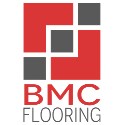 A history of BMC would not be complete without an explanation of the BMC name. Actually, the company's corporate name is Whitfield Carpet Corporation, but that name felt a little long and sounded a little too formal in the beginning. So, as a family-owned business, the company decided to incorporate family name initials to come up with BMC. The B is from the 2 Bills. The M comes from Bill Sr.'s wife, Marion, and Bill Jr.'s wife, Mary. The C originally stood for "commercial," but after the company expanded the product offerings into residential, we now say it is from Bill Jr.'s wifes maiden name "Childress." Back in the beginning, when Bill Sr. and Marion answered the phones, people would ask what BMC stood for -- Marion would always say "Big Mama's Carpet and this is Big Mama speaking." We still have those same customers calling and remembering the "Big Mama" days -- after 28 years in business.
A history of BMC would not be complete without an explanation of the BMC name. Actually, the company's corporate name is Whitfield Carpet Corporation, but that name felt a little long and sounded a little too formal in the beginning. So, as a family-owned business, the company decided to incorporate family name initials to come up with BMC. The B is from the 2 Bills. The M comes from Bill Sr.'s wife, Marion, and Bill Jr.'s wife, Mary. The C originally stood for "commercial," but after the company expanded the product offerings into residential, we now say it is from Bill Jr.'s wifes maiden name "Childress." Back in the beginning, when Bill Sr. and Marion answered the phones, people would ask what BMC stood for -- Marion would always say "Big Mama's Carpet and this is Big Mama speaking." We still have those same customers calling and remembering the "Big Mama" days -- after 28 years in business.